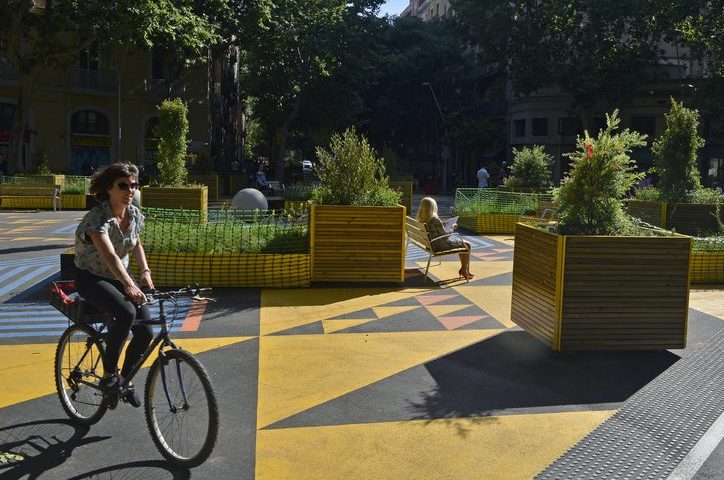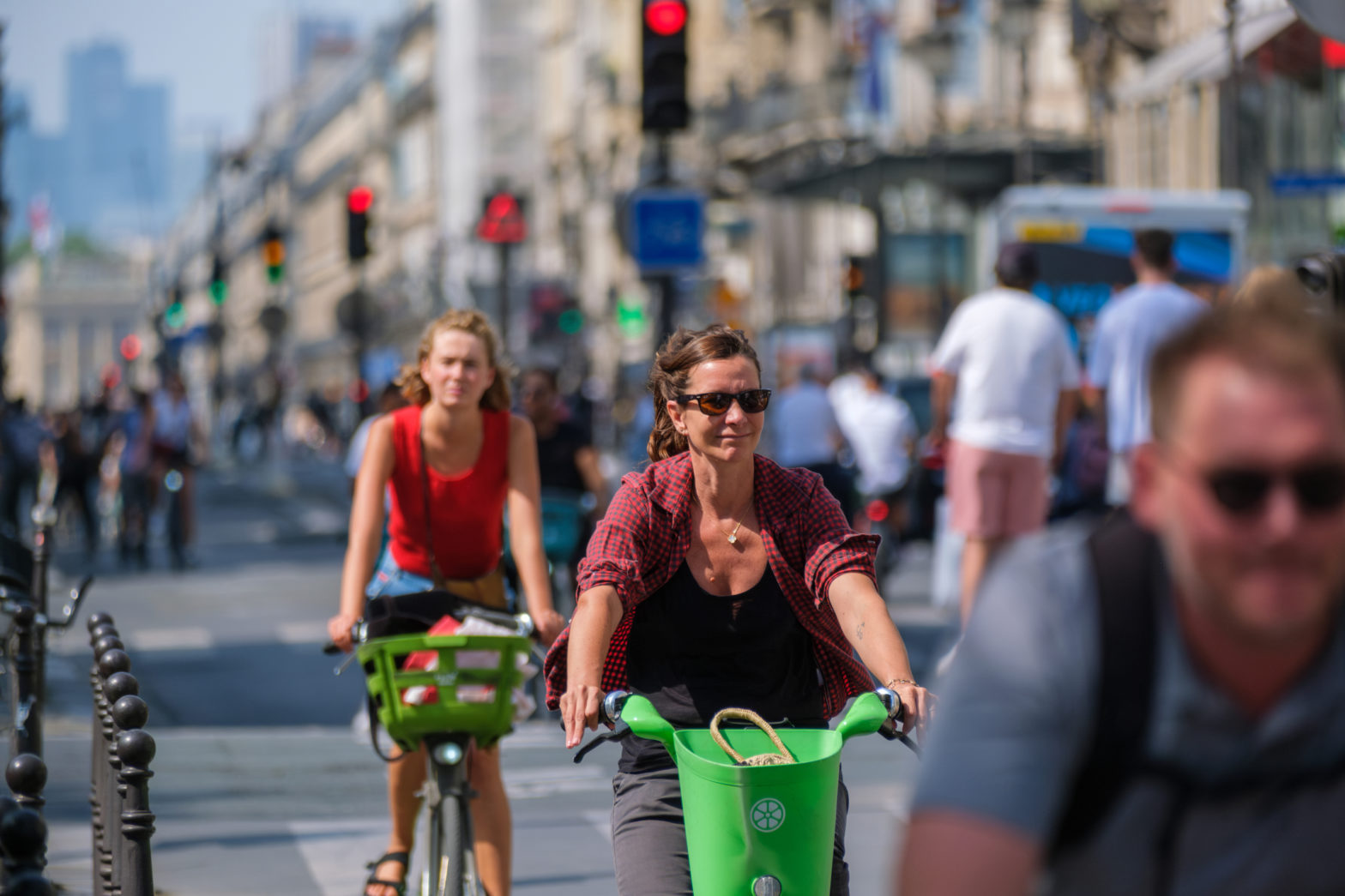
Photo: Ajuntament de Barcelona
Barcelona ‘superblock’ sees 25 percent drop in pollution
18 October 2021
by Christopher Carey
A report from Barcelona’s Public Health Agency (ASPB) has found the city’s ‘superblocks’ scheme has resulted in a 25 percent drop in NO2 levels in some areas – but that pollution may also be increasing on surrounding streets.
The assessment, carried out over the past three years in three of the city’s four superblocks – Poblenou, Sant Antoni and Horta – included surveys with residents to understand the social impacts, as well as air quality monitoring to measure environmental and health benefits.
Speaking to Cities Today, Laia Palència, Senior Public Health Technician at Barcelona’s Public Health Agency and co-author of the Salut als Carrers (Health in the streets) report, said: “Pollution is really affecting our health and if we can reduce it, this is something really remarkable.”
“For me, the creation of public spaces in a dense city like Barcelona – where people can meet outside with each other and have social relations – this is very important right now.”
The city council approved the “Omplim de vida els carrers” (Let’s fill the streets with life) measure in May 2016. To date, four “Superilles” (superblocks) have been created – where entire neighbourhoods have been transformed to prioritise pedestrians and cyclists, create open green spaces for residents, and reduce speed limits for cars to 10kmph.
A further five superblocks are currently under development, with plans to amalgamate and create one ‘super superblock’ across the city.
Mixed results?
Despite the 25 percent drop in NO2 levels and a 17 percent decrease in PM10 particle levels in the Sant Antoni superblock, no significant changes were recorded in Horta, while data could not be collected on Poblenou.
Interviews with residents also revealed a perceived rise in pollution in the streets surrounding the superblocks due to an increase in cars, but as the city did not install equipment to measure levels in the outer areas, this was not expanded on in the report.
“[In this report] we focused on wellbeing, the use of spaces, pollution [inside the superblocks], but a count on cars or pollution [outside the superblocks] was not available,” Palència added.
Older residents in Poblenou noted that they did not use the superblock, and think it has had negative effects on their mobility and access to some places. Other residents felt that while traffic may have decreased inside the superblock, it may also have risen in the surrounding streets.
In Sant Antoni, families with children said the superblock allows them to move around more freely, but that this also created a false sense of security as there was still too much traffic on main corridors.
In Horta, ‘no significant changes’ in pollution were observed, and while lower levels of traffic were seen inside the superblock, residents felt cars were speeding on the main intervening street.
Expansion
The health agency noted that while there were some neutral and negative findings in the report, overall pollution and noise were reduced, according to both environmental measures and feedback from residents.
It also suggested that “more extensive pacification measures should be considered”, as well as “inclusive spaces for all stages of life and ages”.
In November 2020, Barcelona Mayor Ada Colau announced a major expansion of the city’s superblocks initiative, as part of a ten-year plan to reduce the number of cars on the streets and cut pollution.
Devised by 19th-century engineer Ildefons Cerdà, the initiative has become a blueprint for cities looking to cut pollution while improving liveability.
Image: Ajuntament de Barcelona







